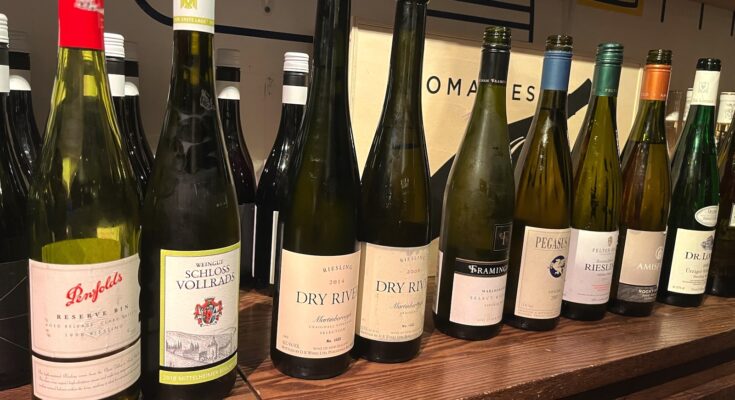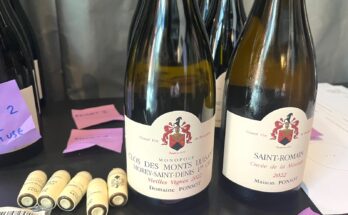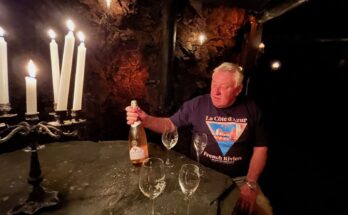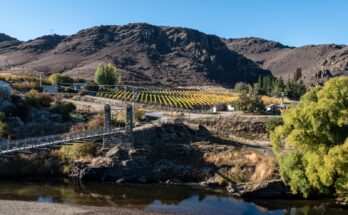Tonight’s gathering of the ‘Wine Flight’ group takes place against a backdrop of traffic carnage – the city having gone into grid-locked meltdown due to an afternoon of rain (after a rare fortnight of beautiful, settled weather). Most of our gang arrive on time-ish, but tales of abandoned Ubers, cross-town walks and so forth take up the first few moments of the gathering. Such is life in our Auckland – apparently voted recently to be one the most liveable cities in the world for a work/life balance – by non-residents I assume. We’re assembled for an evening of Riesling. That wine that everyone claims to love, but nobody drinks. Most of our number have a some bottles squirreled away – but they only see the light of day on an event night, like tonight. So hurrah for that, at least.
The venue is the small private room across the lane at Le Chef in the CBD – a perfect wee spot for a dinner for ten, as we are. A set menu takes the stress out of recommendations and ordering, so we settle into the task of choosing the order in which our bottles will be served. Well, Curt does, and we all agree. Tonight it is driest to sweetest, regardless of age. Or our best guess at that anyhow – that’s one of the downfalls of Riesling – it’s always a “guess the style and residual sugar content” conversation. I can see why some have that sweetness scale on the back label. Even ones that you might drink on a regular basis, have large fluctuations in levels of sweetness from vintage to vintage.
Onto the wines…
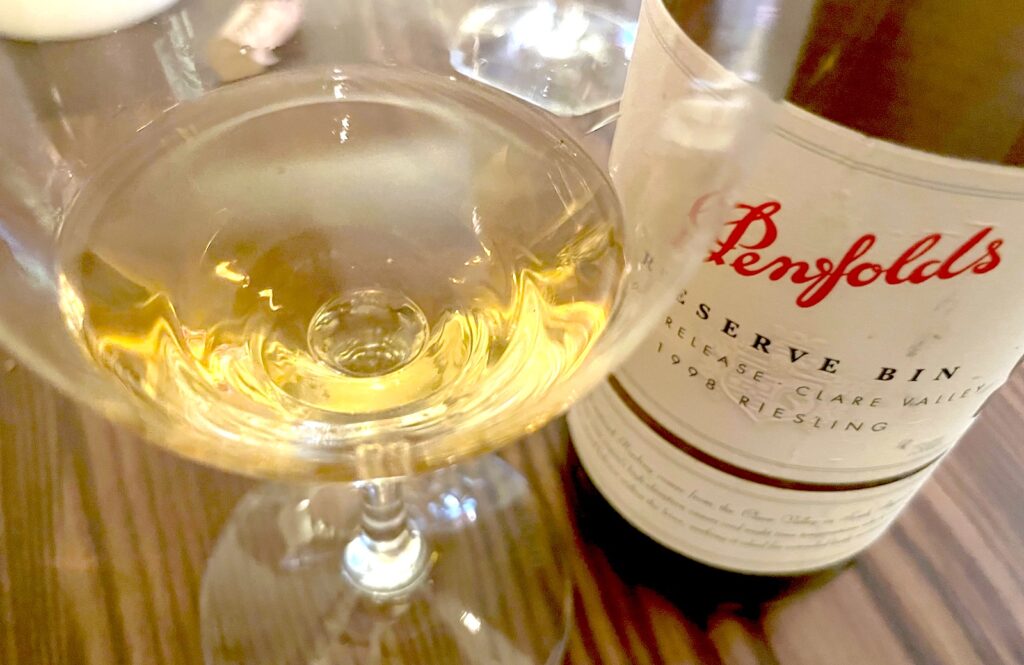
Starting with a Penfolds Aged Release Clare Valley Dry Riesling 1998. When young, Clare Valley Riesling can be brutally acidic, needing over ten years to settle into themselves. I guess that’s the reasoning behind this aged release – and now we have the benefit of the cellaring, to be drinking it at 25 years of age. Under cork (as are many of the wines tonight) this has a mid-golden colour in the glass, and before it opens up, a little sherry-like oxidative note on the nose. Dry, with a crunchy acidity and plenty of nutmeg, cardamom and black lime spiciness. The finish is a bit short, and overall this is OK at best. Bit of a collectors piece. Good but not great.
Guessed to be next-driest is a young German dry Grosses Gewächs Riesling. Vollrads Mittelheimer Edelmann 2018. A lovely youthful dry wine, with bright acidity, a slatey minerality and lots of tangy green elements like sorrel, apple and lime zest. Also a richer apricot and mandarin flavour deeper into the palate. Needs a bit more time to be showing it’s best, but a good clean example of this style.
It is fun to look at the order, pairing, and attributes of a set of wines like this – and it isn’t too tasking a thought to put two Dry River wines together as a pair. Dry River Riesling 2006 has the edge on age, but Dry River Riesling 2014 had stellar reviews on release. I consider the white aromatics of Dry River to be their best wines, and these two, from the Craighall Vineyard, are excellent examples. The 2006 has a more developed nose and palate, with toasted almonds, honeycomb and creme brulée on show. The 2014 is much fresher, and I can see why it got such high scores. Off-dry – very delicate, with white florals, wet stone minerality, and plush stonefruit flavours. Both have strong finishes, with great length.
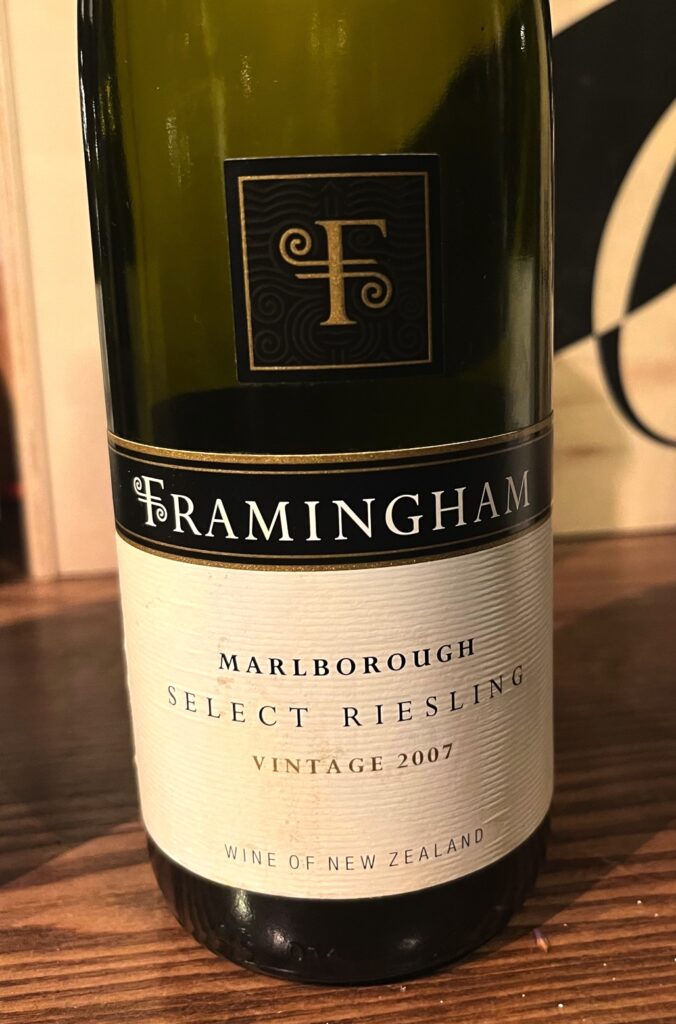
Continuing with the classic expressions from across the regions of New Zealand, we move to South Island and a Framingham Select Riesling 2007 from Marlborough. One of the first to plant Riesling in the region, back in 1981. This is both quite ripe and complex, but also light on it’s feet. Showing some ‘red’ flavours – blood orange and raspberry amongst the citrus on the palate. I loved this wine with the excellent Snapper Ceviche we were served. It’s a lower 9% alcohol, and would happily sit as an aperitif too. A couple of people thought this was their favourite wine of the night.
A Pegasus Bay Riesling is another well-regarded label for this varietal – making at least three styles in most years. I find their styles vary quite a bit from vintage to vintage, in particular the sweetness levels not being consistent. However, the Pegasus Bay Riesling 2007 is a good foil to the other NZ examples, and, being at similar ages, it is an opportunity to see how our local wines develop to this optimum drinking window of about fifteen years in. Still very bright and zingy, with a limey acidity. This wine can show a distinctive spritz on the tongue, and it hadn’t dissipated with time – a few of us felt that this was a distraction in this glass.
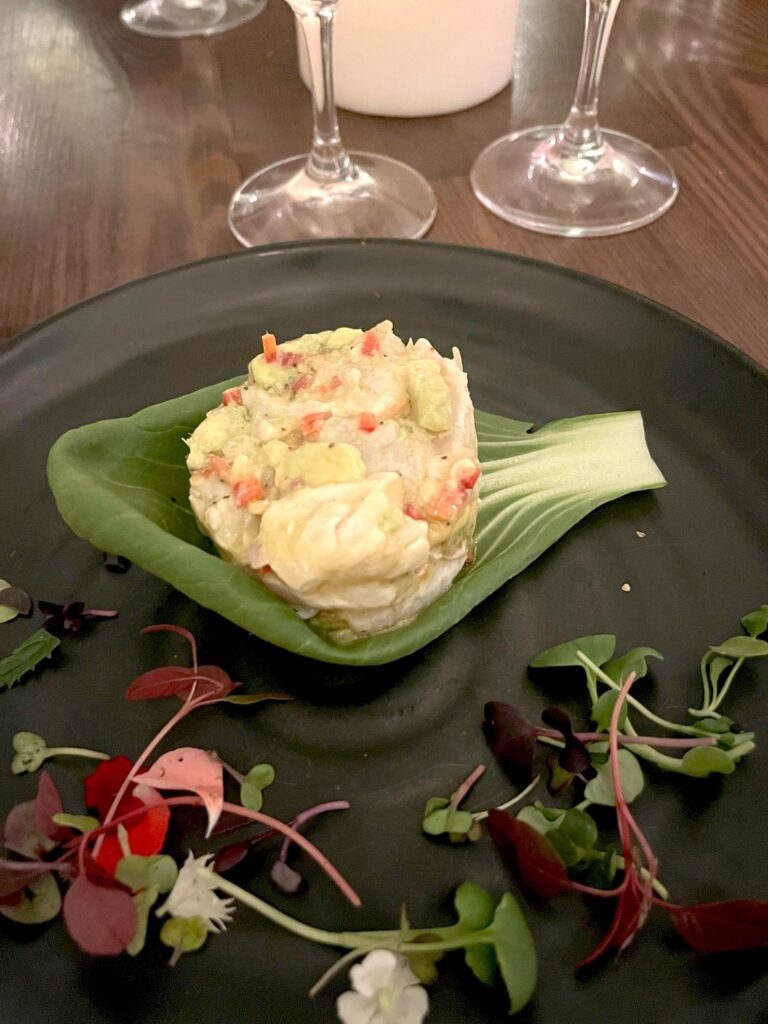
Moving down to Central Otago, it is no surprise to see a Felton Road Bannockburn Riesling 2014 on the table at a tasting of Riesling in New Zealand. Another with 9% alcohol and a light, frisky style. The residual sugar is probably well up to 50 plus g/l, but other than working that ripe sweetness into every corner, it really isn’t obtrusive as the balance of acidity, spice and fruit is the focus. Ginger, jasmine and mango makes this quite exotic on the palate too. Very fine.
Staying in Central Otago, The first Amisfield wines were in 2002, so the Amisfield Rocky Knoll Riesling 2005 is an early effort from them – and a wine I don’t think is produced any more. It is the first wine tonight to really start to show the kerosene note of an older Riesling, which I really like. Riesling can be a confusing beastie – this wine is as dry and yet as sweet as any wine that we’ve had tonight, with both things happening on the palate at the same time. Rich and generous, it is also zesty, with a grapefruit peel note bouncing off the fruit jube flavours.
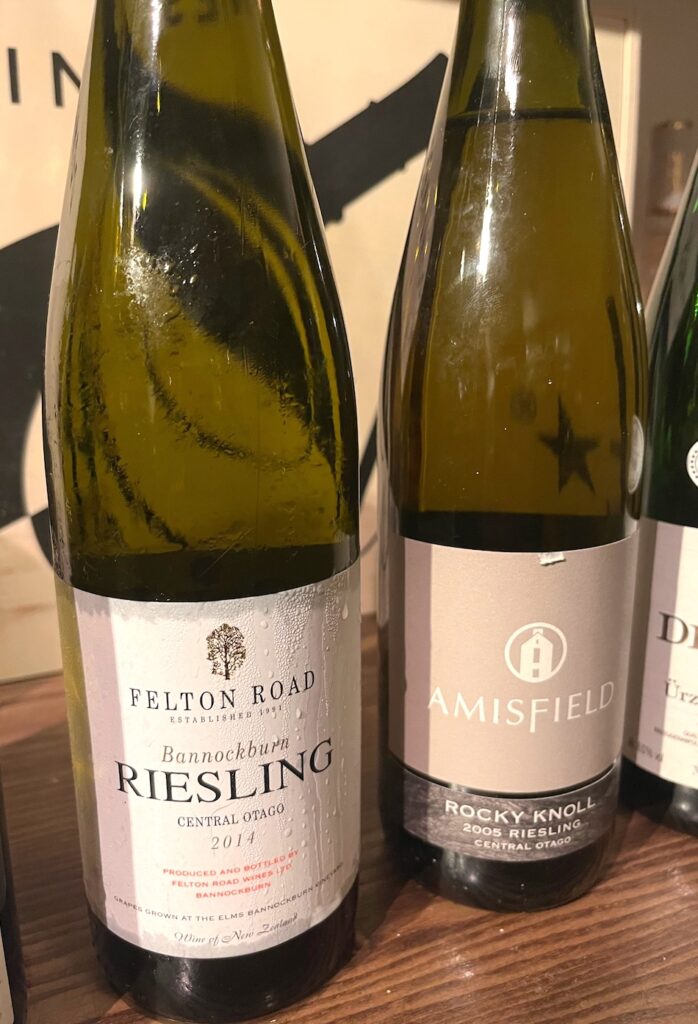
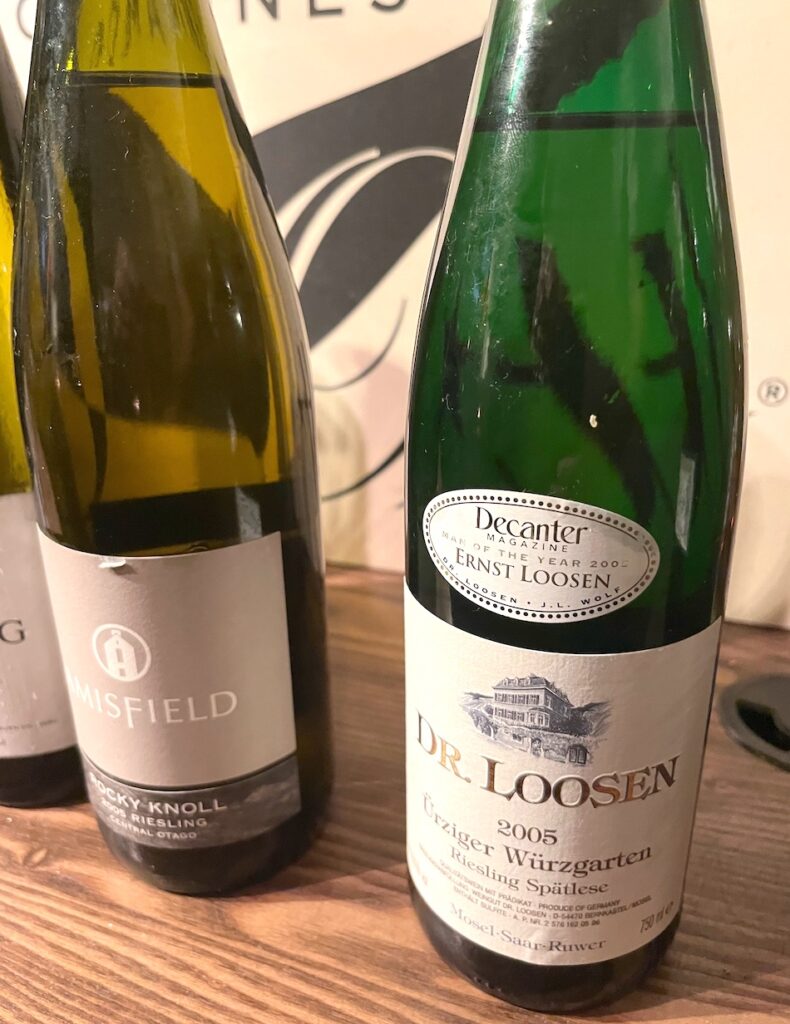
Served alongside the Amisfield, and with the food course of steamed chicken, was a Dr Loosen Ürziger Würzgarten Riesling Spätlese 2005. In the spirit of comparing vintages across New and Old World, this was slightly one-sided affair, with the german wine showing its pedigree as the best wine of the night. White peach, crushed green herbs, apricot, pineapple and honey on the nose. Some botrytis here I suspect – the palate quite succulent and golden, with an orange marmalade flavour developing into a creamy texture and super-long finish. Superb.
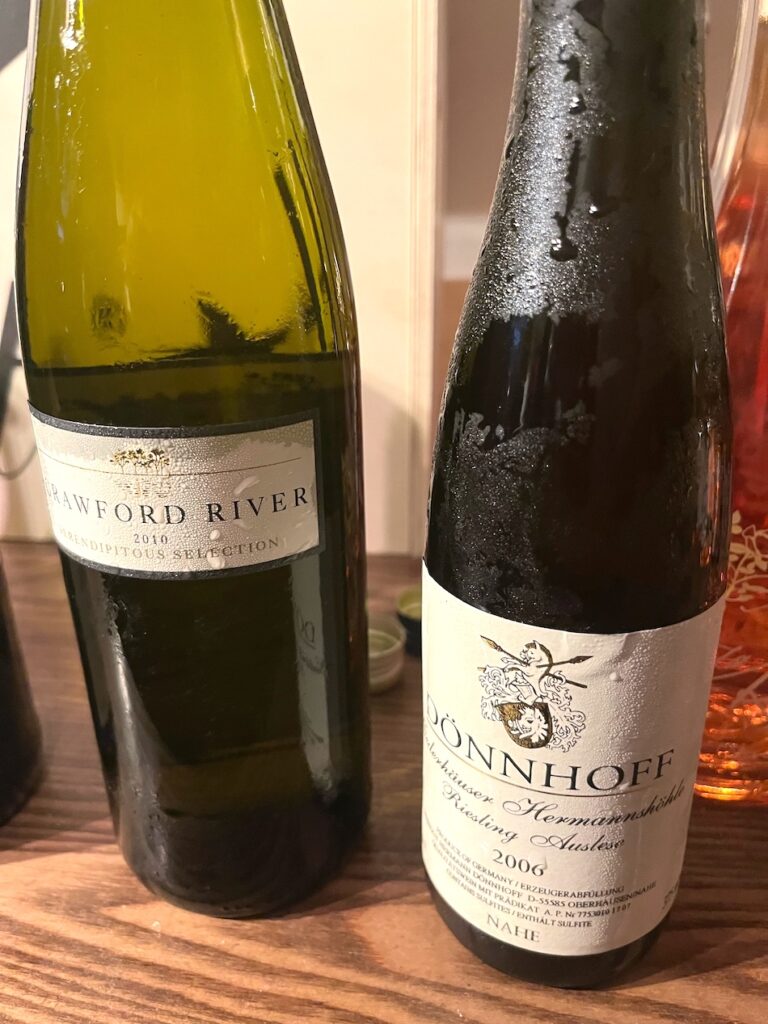
Crawford River Serendipitous Selection Riesling 2010 is another Australian aged-release wine – only released to buy after ten years in bottle already. Made in the Auslese style, which is definitely on the sweet side of things. Hazelnut, satsuma, cloves and lemon blossom on the nose. Heady and voluptuous in the palate, with more spice, nectarine and citrus. A tickle of phenolic fruit tannin and some chalky minerality make for a quite plush and layered expression. The finish is very long.
To round things off with a treat – and heading further into sweet styles with a Dönnhoff Niederhäuser Hermannshohle Riesling Auslese 2006. The most concentrated wine of the night, with a treacle-like viscosity and lovely freshly-baked cake aromas. Mingling citrus, quince, stonefruit and more tropical fruits like fig, melon and guava, with a marmalade ooze and unctuousness. The texture is exquisitely silken and envelops the tastebuds. The finish is quite a bit drier than the palate and nose, with the minerality coming through. Very good.

